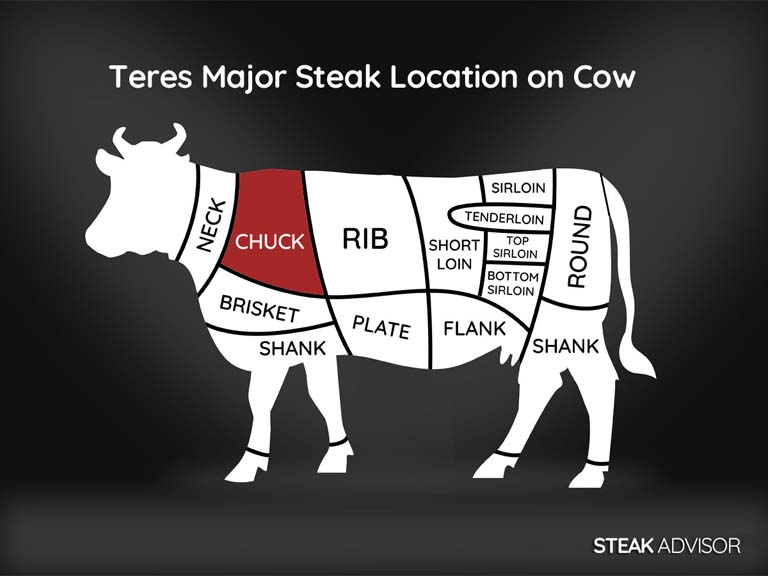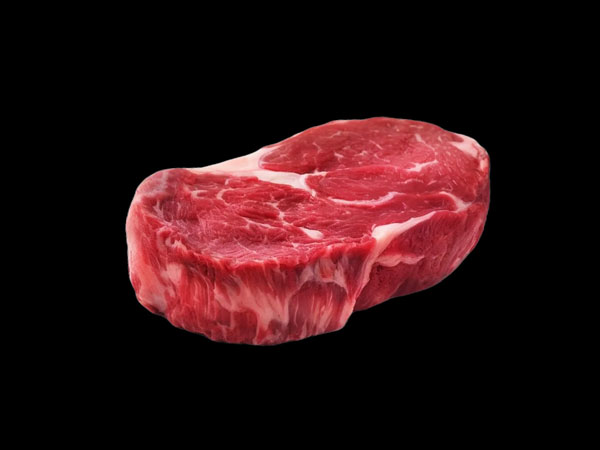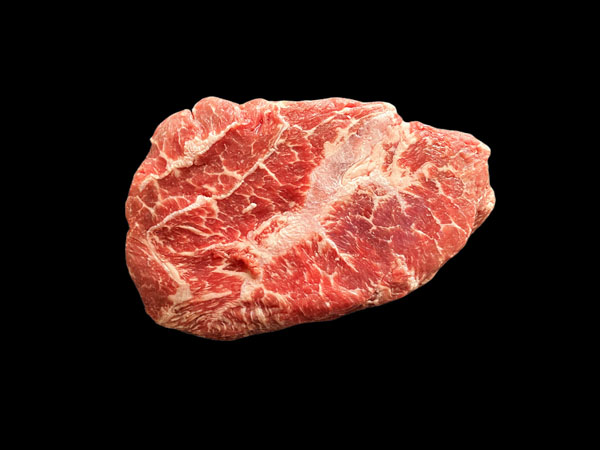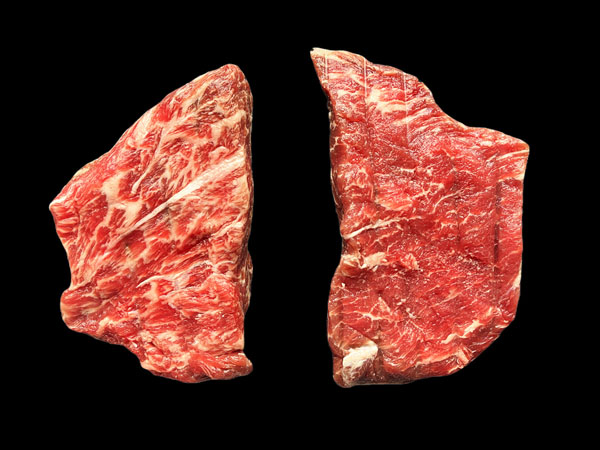Teres major steak is a lesser-known cut with a rich beefy flavor and surprisingly tender texture. This hidden gem is an excellent, budget-friendly alternative to tenderloin steak. But what exactly is teres major? Where does it come from? What are its other names, and why should you try it? Read on.
What is Teres Major Steak?
Teres major steak (mock tender steak) is a beef cut from the chuck primal. It’s a versatile cut that works great whether you cook it fast over high heat or low and slow. Despite its lean profile, it offers a nice tender texture and a rich beefy flavor. It’s available as a whole teres major muscle, shaped like a smaller version of the tenderloin, or as cross-cut steaks similar to tenderloin steak (filet mignon).
It’s difficult to spot teres major steak in stores since it takes a skilled butcher to cut it right instead of leaving it as a whole shoulder clod. Big processing plants usually skip this detailed work since it isn’t as efficient or profitable. Plus, it goes by many names, with “mock tender steak” and “shoulder petite tender” being the most common.
Teres Major Steak vs. Tenderloin Steak vs. Chuck Tender Steak
Teres major steak, tenderloin steak, and chuck tender steak all share a long, narrow shape with a pointed tip, but they come from different parts of the cow.
Tenderloin is extremely tender, though it has a mild flavor and high price. Teres major isn’t quite as tender as tenderloin, but it has a great combination of tenderness and rich, beefy flavor. On the other hand, chuck tender has a strong beef taste but is naturally tough.
What Are the Other Names for Teres Major Steak?
Here are the most popular other names for the teres major steak in the United States:
- Mock Tender Steak,
- Shoulder Petite Tender,
- Chuck Shoulder Tender,
- Shoulder Tender,
- Chuck Tenderloin Steak,
- Teres Major Steak,
- Petite Tender Medallions,
- Bistro Steak,
- Teres Major Medallions.
Where Does Teres Major Steak Come From on a Cow?
The teres major steak comes from the chuck primal, specifically the shoulder clod. It’s a small muscle that sits at the top of the shoulder clod, right next to the top blade (flat iron). Butchers have to trim away fat, silver skin, and connective tissue to get it ready. They take it out as a whole muscle and either leave it that way or cut it into smaller, medallion-shaped steaks that look much like filet mignon.

What Does Teres Major Steak Taste Like?
Teres major steak has a deep, beefy flavor and a super tender texture. It doesn’t have the rich marbling of a ribeye, but it offers a meaty, slightly earthy taste that’s hard to beat. You’ll enjoy teres major steak if you like leaner cuts with a strong, beefy flavor and tender texture.
What Are the Best Methods for Cooking Teres Major Steak?
Teres major steak remains delicious no matter how you prepare it, but the best methods involve fast, hot cooking over direct heat on a pan or grill, reverse searing, and sous vide. It’s a versatile cut that even works well when smoked or roasted. More details below.
- Pan-Searing Only: Pan-searing is quick, simple, and perfect for building a flavorful crust on teres major steak while keeping the inside medium-rare. It’s ideal for those who love a nice crust with a juicy center, all in about 10 minutes.
- Grilling: Grilling adds a smoky, charred flavor that takes the teres major to another level. It’s a great option if you love the taste of open-fire cooking. Grill it directly over high heat to form a delicious crust, then finish it with indirect heat at a low temperature to achieve perfect doneness.
- Sous Vide: Sous vide is a game changer for perfect edge-to-edge doneness. You set the temperature, let it do its thing, then finish with a hot sear. It’s practically foolproof, making it a great method to cook teres major steak if you like consistency without the stress of overcooking.
- Pan-Searing and Oven-Finishing: This is a good middle-ground method for teres major steak, giving you more control over doneness, especially with thicker cuts. It starts with a hot sear to build a flavorful crust, then finishes in the oven at a lower temperature to ensure even cooking.
- Reverse Searing: This is the opposite of the pan-sear-and-oven method – you cook the teres major low and slow first, then blast it with high heat at the end. It’s the go-to method for even cooking and a nice, crusty sear without overcooking the inside.
- Smoking: This is the way to go if you love deep, smoky flavors. Slow smoking infuses the teres major steak with rich, woodsy notes, making it incredibly flavorful. A final sear at the end gives it that classic steak texture.
- Roasting: Roasting is a simple and hands-off method that works well for cooking multiple teres major steaks. Roasting keeps the steak juicy and evenly cooked without much effort. You can finish it with a quick sear for that crisp exterior. Great for when you want to cook multiple steaks at once without standing over a stove.
Each of these methods brings out something special. Whether you love a smoky finish, a perfectly even cook, or a fast and crispy sear, there’s a technique to match your preference.






